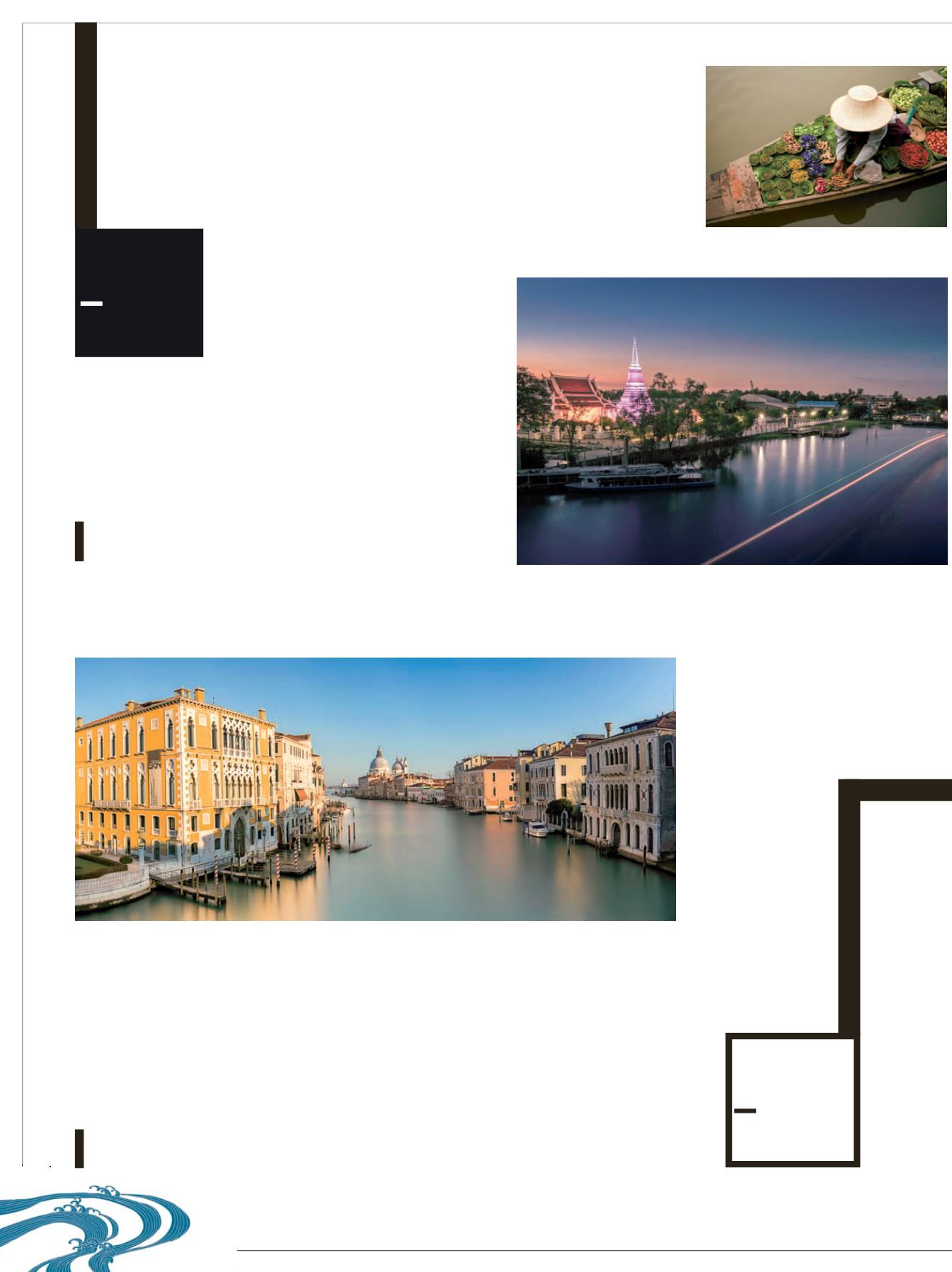
Bangkok’s elaborate
khlongs
(canals)
have weaved through the Thai capital
since the 18th century. Originally dug
as moats to protect the city, additional
canals were later created for irrigation,
drainage, and transport as the city
e x p a n d e d . Th e r e a r e f a r f ewe r
waterways today than there were
before, as many were paved over to make roads, but traveling by
motorboat along Khlong Saen Saep in the center of Bangkok and
Khlong Phadung Krung Kasem around the Grand Palace is a way
of life for locals and a fun treat for travelers, who zoom past
temples, markets, shopping centers, office towers, and teak
homes.
Featured in countless movies, the canals of Venice provide the only practical way to get around.
ਬϞீཀ༶
ئ
ٙஹഐdࣚɛʑঐί
۾
̵̬ஈ༷f
What makes the network of 118 islands that comprise Venice unique is that all roads are for pedestrians
only. Both
canali
, larger man-made canals, and
rii
, 42km of smaller natural and artificial canals, intersect
the city, which was founded 15 centuries ago when foundations were built atop wooden stakes planted in
the mud. Because the islands surrounding the Rialto, the city’s center, often flooded, they had to be
constantly drained and widened. Over time, canals were dug to allow boats passage. The famous S-shaped,
3.8km-long Grand Canal runs through the center of Venice ending at St. Mark’s basin, dividing the city into
two. Some 435 bridges over the network of four canali and 176 rii allow people and goods to move
throughout Venice via iconic gondolas, public
vaporetti
and
motoscafi
water taxis.
Famed for their floating markets, Bangkok
’
s canals offer a unique way
for visitors to see the city.
˸˥ɪ̹ఙၲΤٙਟԋdʔሞ݊݇
ئߚמ
ᒔ݊༶
ئ
dே̂တಃंၾ
ݺ
ɢf
1
BANGKOK
●
Thailand
3
VENICE
●
Italy
PHOTOGRAPHY: GETTY IMAGES(DULYANUT SWDP, DIETER MEYRL) / TOP PHOTO GROUP


